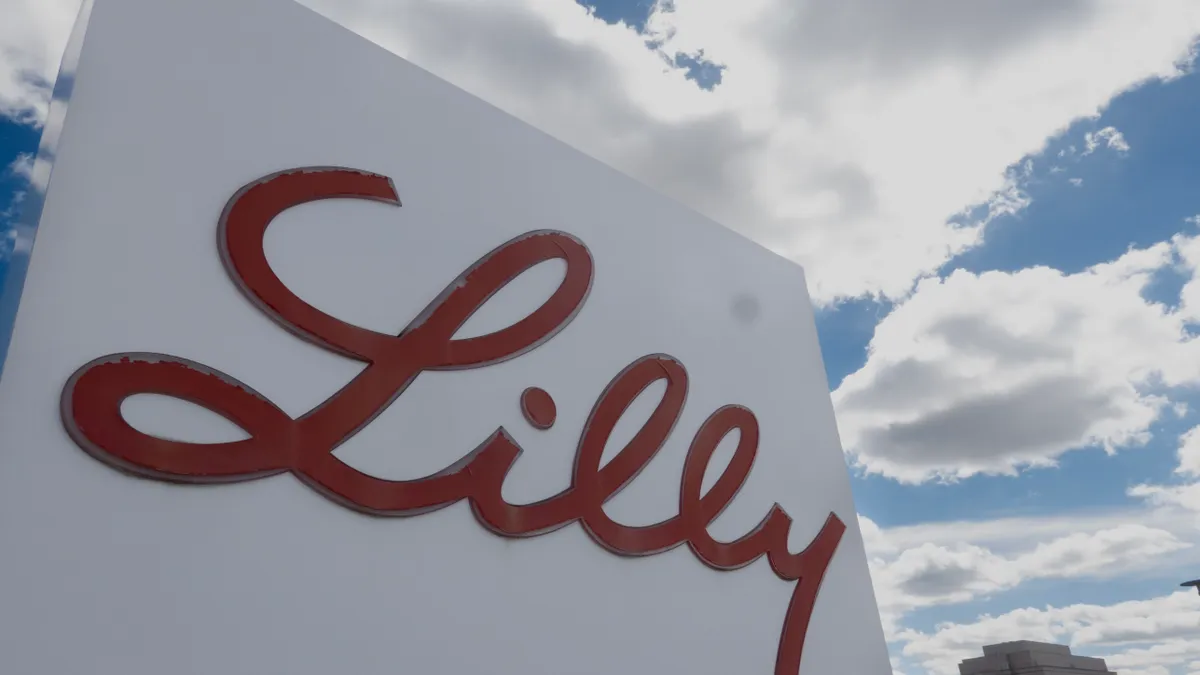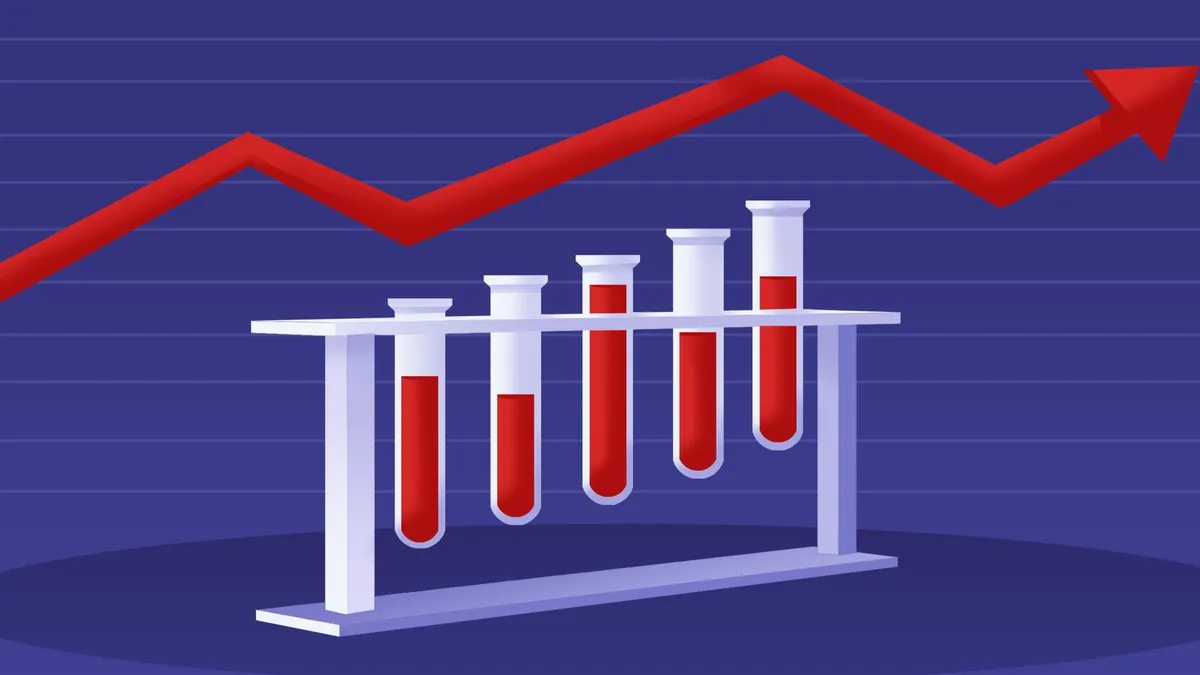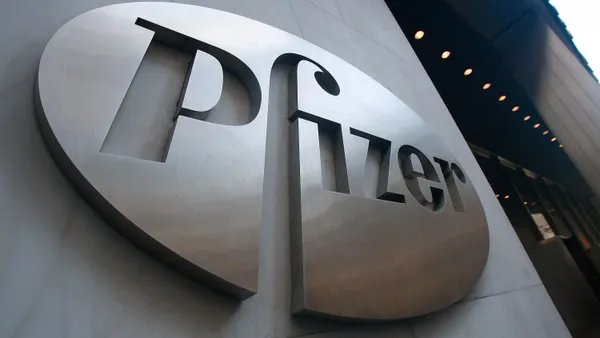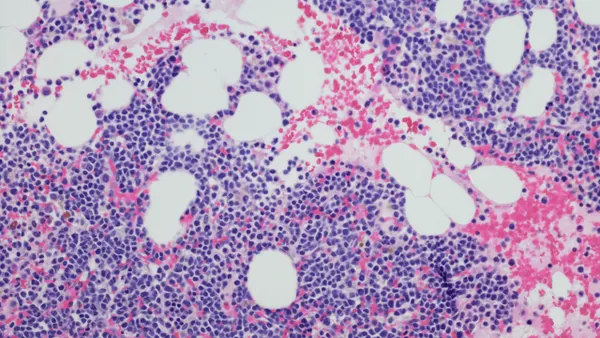Dive Brief:
- Eli Lilly’s profit doubled in the fourth quarter as the Indianapolis-based drugmaker raked in revenue from diabetes and obesity drugs.
- Net income rose to $4.4 billion, or $4.88 a share, from $2.2 billion, or $2.42 a share, in the same period a year earlier, Lilly said Thursday. Non-GAAP earnings reached $4.81 billion, or $5.32 a share. Analysts had been expecting non-GAAP earnings of $5.11 a share, according to Leerink Partners analyst David Risinger.
- For the full year, Lilly told investors to expect non-GAAP earnings of $22.50 to $24 a share, meeting or exceeding analyst forecasts. Consensus for that figure was below $23, offering another positive note to Lilly’s earnings report, Evercore ISI analyst Umer Raffat wrote in a note to clients. The company’s shares climbed almost 5%, to around $881 apiece, in midday trading Thursday.
Dive Insight:
The profit figures offered reassurance for investors after Lilly told investors in January that it had overestimated demand for diabetes and obesity medicines. The company’s shares tumbled almost 7% on Jan. 14, when Lilly issued new revenue guidance for the fourth quarter and 2025.
Since that time, Lilly’s stock price has recovered the losses and more, helped by a broader market increase and an expanded approval for its inflammatory bowel disease drug Omvoh. And even if sales of its top sellers weren’t quite as high as expected in the fourth quarter, Lilly’s diabetes and obesity drugs are still experiencing significant growth.
Sales of the diabetes medication Mounjaro jumped 60% in the fourth quarter to $3.5 billion; revenue from the newer Zepbound obesity drug reached $1.9 billion, compared with $175.8 million in the fourth quarter of 2023. Lilly is looking to take market share from rival Novo Nordisk in the obesity market after a head-to-head trial showed Zepbound helped patients lose more weight than Wegovy.
The market for these incretin drugs “continues to grow rapidly, and Mounjaro and Zepbound are both gaining share,” CEO Dave Ricks told investors during a conference call. “We believe both products are still very early in their launch cycle.”
For the full year, Lilly reiterated its overall revenue guidance of between $58 billion and $61 billion. After a series of investments in manufacturing, the company expects to be able to produce at least 1.6 times as many incretin doses in the first half of 2025 as it did in the year-earlier period.
Both Lilly and Novo are also pushing ahead with next-generation drugs. While reporting its own earnings Wednesday, Novo released details of a new Phase 3 trial of its experimental obesity drug CagriSema.














